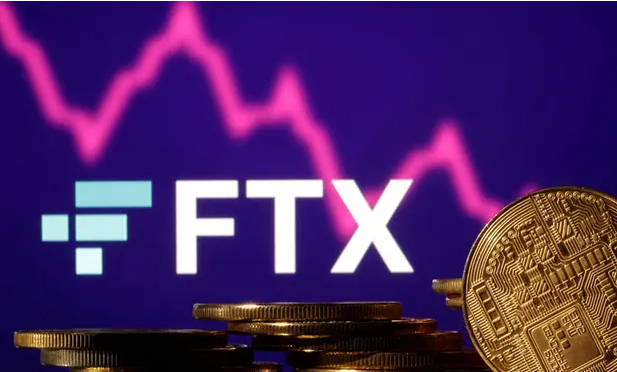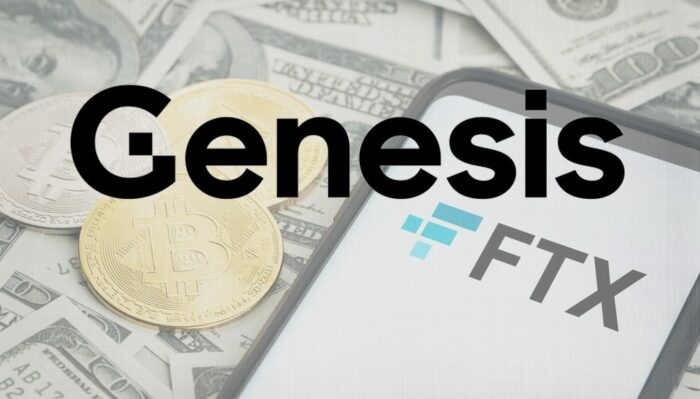
This is the third and final part in our recap of the collapse of FTX. In the first two issues we covered what happened in the weeks leading up to the failure of the exchange and how Alameda Research and FTX became so entangled and fraudulent in the first place.
Today we’ll cover the contagion and fallout throughout the Crypto industry and some lessons learned by Crypto investors and industry insiders.
Leveraged Unwind
The Contagion that we are seeing from the failure of FTX is mainly an unwind of built up debt between Crypto companies. This is acting with a lag as a majority of companies with financial problems were already on the ropes from earlier in the year as a result of the collapse of Luna/Terraform labs and Three Arrows Capital.
The list of Crypto lenders that have so far filed for bankruptcy as a result of these earlier problems include Voyager, Celsius and BlockFi. Gemini’s yield program has halted withdrawals. Nexo has announced that they will exit US markets but have not yet announced financial problems.
If you haven’t already, you should strongly consider whether any of the yield generating accounts at Crypto companies are worth the risk.
These failures are all a result of counterparties defaulting on loans. Essentially, Crypto hedge funds and other entities took on loans from these lenders during the bull market and have failed to repay this year. To compound this issue towards the end of 2021 and in early 2022 the Crypto lending space was so competitive that loan terms were extremely favorable.
Lenders were growing rapidly and courting new investors. To be successful they needed to grow their loan book at any cost.
Kyle Davies, a co-founder at Three Arrows Capital explained in this interview that his Fund was offered billions of dollars in loaned funds on an uncollateralized basis. Other lenders were making loans on low quality collateral. Some were slow to liquidate loans as collateral value dropped.
This mechanism was a large part of the story of the FTX collapse. It appears that loans from other companies were being taken using FTT tokens and FTX stock as collateral with no plausible way to liquidate those assets anywhere near book value.
This is widely speculated to be the reason why FTX CEO Sam Bankman Fried attempted to bail out insolvent lenders like Voyager and BlockFi earlier this year, to ensure that they did not liquidate his FTT collateral.
This means that the contagion is very different to previous eras of Crypto collapse. It’s not hacks that are causing issues as happened in 2014. It’s not voluntary selling of assets as we saw in 2017 with ICO treasuries. It’s insolvent companies with giant holes in their balance sheets from defaulted loans.
DCG and Genesis
This brings us to the Genesis of all of the leverage in the Crypto industry, Digital Currency Group (DCG) and their subsidiary lending and prime broking service, Genesis. So far Genesis appears to have at least $1.8B owed to creditors. Its parent company DCG is on the hook for $575M that comes due in May next year and another $1.1B owed to Genesis in 2032.

Details are limited and DCG has gone quiet, but it appears that DCG has already committed to backstopping part of the faltering Genesis loan book.
We have no real idea how deep the hole is at Genesis. In early 2021 we learned that their total loans outstanding stood at $3.8B. This had increased by more than 5x since June 2020. It’s not inconceivable that Genesis had $10B in loans owed to it when it halted withdrawals in November. With so much carnage rippling through the industry it’s impossible to know how many of those loans are still performing and how many have defaulted leaving bad debt on the books.
For the first time since its 2013 founding, the DCG empire could be crumbling.
While you aren’t all that familiar with Genesis as their dealings are mainly with other large Crypto firms, you are definitely familiar with the family of DCG companies. DCG owns Coindesk and Grayscale, which operates the Grayscale Bitcoin Trust. They also hold one of the largest venture portfolios in the industry, with fingers in almost every pie.
Among other things, Genesis loans are used as the counterparty to many yield products throughout the industry. The first shoe to drop was Gemini’s yield program, which simply passes through Genesis loans onto consumers, which is why they were forced to gate withdrawals shortly after Genesis.
Problems at DCG are problems throughout the Crypto asset class.
As the major Crypto prime broker and lending provider, the halting of withdrawals at Genesis is a major problem. Even if the lender can tidy up its books and continue to operate, their pause in normal operations likely means that Credit and business operating loans throughout the industry are much more constricted than normal.
How will Genesis Shake Out
Problems at DCG are not the same as problems at smaller Crypto Firms. The company has a wide range of assets that they can sell off to recapitalize the business and can seek outside investment if push comes to shove. There have been rumors about fundraising attempts while an offer to purchase Coindesk for $300M was apparently rejected as too low a bid. The main point is that DCG appears to need additional funding to maintain operations, but it might not be at a crisis point where the whole company is about to go under.
For example, early rumors that the Grayscale Bitcoin Trust could be liquidated seem to be unfounded.
That’s not to say that there aren’t deep problems. It would not be at all surprising if Genesis were sold off or allowed to enter bankruptcy. A sale of Coindesk would not be surprising. The total collapse of DCG and the sale of Grayscale, one of the major revenue sources for the corporate group, would be surprising to say the least.
With all that said, we just don’t know. DCG has been uncharacteristically quiet for weeks and nothing they have said inspires any confidence.
Silvergate
Another institutional Crypto company having problems is Silvergate bank. Silvergate is a US registered and publicly listed bank whose place in the industry was providing banking services to Crypto companies. In 2017 Crypto companies had awful trouble finding reliable banking services who would not close accounts. Silvergate fixed that and gained most of the banking business in the industry.
They claim not to have any exposure to FTX, but they were the banking partner
This opens up two big problems. Firstly, a major part of the FTX story was the dubious banking arrangement, where customers were asked to wire funds to the affiliated hedge fund, Alameda Research, rather than to FTX bank accounts. CEO Sam Bankman-Fried claims that FTX did not have access to banking at the time, but it appears that this practise carried on far longer than could be considered reasonable.
If Silvergate were aware of this arrangement and allowed it to continue, regulators will have some serious questions to ask.
The second and more minor issue is that banking naturally carries significant settlement risk as funds are debited and credited across accounts, sometimes opening up short term loans as settlement finalizes. It doesn’t appear that FTX has left a big gap in Silvergate balances through settlement failures, but it’s a possibility.
The other angle here is that if Silvergate had a major part to play in improper banking for FTX, they could find themselves liable for fines and even clawbacks of funds into the FTX bankruptcy. Members of Congress have already asked for information and it seems likely that a regulatory investigation is coming.
Solana Ecosystem and Wrapped Tokens
It’s no secret that FTX and Alameda had a big role in investing in and guiding the Solana ecosystem. Sam Bankman-Fried and associates had an outsized position in several ecosystem tokens like Serum and Maps. Solana token price has already been cut in half since FTX failed and ecosystem tokens are even more badly down.

The less obvious problem in Solana was that the major wrapped assets were custodied by FTX. Sollet, the wrapped Bitcoin token is currently trading at a 95% discount to Bitcoin. Most traders missed this small but important point as the FTX collapse was happening, but it’s a useful piece of information to keep in mind.
Not all wrapped assets are created equal.
If you participate in DeFi you no doubt use wrapped assets. They allow you to trade and use assets from one blockchain on a different one or sometimes just provide a different token standard as a wrapper.
The major wrapped assets to be aware of are wBTC and wETH. The differences are important and useful to understand.
In the week after the FTX collapse there was a Twitter joke about wETH having problems. This led the asset to depeg from normal ETH tokens, despite being exchangeable 1 for 1. Articles were written in an attempt to calm panicked sellers of the wrapped token after the joke was reported seriously by Bloomberg.
Types of Wrapped Tokens
Wrapped ETH is a token which places an ERC-20 wrapper around ETH token, allowing it to take advantage of more advanced features of the Ethereum Blockchain. This process is handled entirely by a smart contract. The stash of ETH tokens can be viewed on the blockchain. The total supply of wrapped ETH can be audited in real time to monitor for problems. Nothing can go wrong with this system and funds can’t be stolen unless there is a smart contract exploit.
A big part of what makes wETH extremely safe is that it is self contained in the Ethereum ecosystem.
These sorts of smart contract wrapped tokens are similar to bridged assets. These wrapped tokens also operate by smart contract, but across different blockchains. They feature smart contracts on both blockchains which will custody native tokens and mint wrapped tokens on a different blockchain as requested by users on a 1 for 1 basis. At least that’s what they do when they’re operating properly.
Bridged tokens often break and have security exploits, the technology is extremely complicated and open to hacks.
Bridge exploits are by far the most common DeFi hack, with more than $2.5B stolen from bridges in the last two years.
The final type of wrapped asset is a custodial wrapped asset, which includes the Solana wrapped assets which were custodied by FTX and other more commonly used wrapped assets like wBTC and stETH on Ethereum. wBTC is custodied by BitGo and operated by a DAO, they have fairly good transparency and seem unlikely to suffer problems, but it’s important to be aware that if BitGo goes into bankruptcy, wBTC could have issues. stETH is issued primarily by Lido and is set up in a similar way with similar risks.
The main point is that if you are using wrapped assets, you should understand who holds the custody of the underlying token and whether they are at risk of financial problems.
Solana Wrapped assets are trading at a giant discount and unlikely to be fully convertible. I don’t think there’s a high likelihood that wBTC or stETH have similar issues, but it’s worthwhile being aware that they could have problems. If you’re holding wrapped tokens, know who the counterparty that can unwrap them is and whether or not they are trustworthy and solvent.
Lessons
Here are the big take-aways from all this…
Self Custody
The first and most important lesson out of this giant mess is that every investor in Crypto needs to know how to self-custody their assets. It’s the same lesson that was learned out of the 2014 Mt Gox collapse. It’ll likely be the lesson from the next Crypto crisis.
There is no excuse. Learn how to take custody of your Crypto. Easy self-custody is the major innovation.
There’s a range of options, if you’re only dabbling then use a software wallet like Metamask or Exodus. If you’re a little more serious you’ll want a hardware wallet like a Ledger or a Trezor which are available for less than $100. At the high end it might be worth considering a shared recovery service like Casa.
Whichever way you go, know how to Self Custody. Know how to move your Crypto off an exchange and onto your wallet. Practice doing it so that you can remove your funds when things go poorly.
During the FTX collapse, the people that could remove their Crypto the day that things started looking bad kept their coins. Others lost theirs.
Know Your Counterparty
The firms in the Crypto industry are not like banks or stock exchanges. They don’t have anywhere near the same regulatory scrutiny. They don’t have the same insurance. They don’t do the same audits.
This isn’t the wild west, but it’s still close.
If you’re giving your money or your Crypto over to an exchange or custodian know your counterparty. Know their counterparty. Read the terms of service and see what the risks are. The most surprising failure out of the FTX collapse was Gemini Earn closing down. They weren’t exposed to FTX but they used Genesis who suffered losses in the FTX collapse.
As a general rule, if you’re earning yield then your Crypto is being lent out. At the moment most of the yield products are closed down or bankrupt, but keep this in mind for next time. It doesn’t even have to be your chosen custodian that has problems, this industry is small and most firms have exposure to a wide range of counter-parties.
Always gauge whether the risk associated with the yield you’re getting is worth it. During this cycle plenty of investors lost their entire investment because they were chasing 10% yields. When the next bear market starts, your first thought should be whether you still want exposure to lending firms.
Know what you own
Not all Crypto assets are created equal. If you’re dabbling in altcoins and DeFi, know how the tokens you own are connected to the larger ecosystem.
As we already covered, wrapped assets have unique risks and that needs to be recognized. Ecosystem tokens, that is altcoins within a broader protocol should be viewed as having a strong correlation to the ecosystem they live in.
Problems in one place can easily spread.
Understanding how these tokens move together and how problems in one part can affect other parts is vital as the Crypto token ecosystems get more and more interlinked.
Proof of Solvency
While my advice would be to not have any tokens on any exchange or with any custodian at the moment, that’s not practical for everyone and people do need to trade sometimes. Ryan Sean Adams at Bankless has coined a phrase that I think explains how to think of exchanges at the moment:
Think of an exchange like a public restroom. Go in, do your business, and get out.
This isn’t the period where you want to hold assets on an exchange without a good reason. We’re heading into Christmas which is historically a low liquidity period. While a lot of insolvent firms have been flushed out, it feels decidedly like there are more shoes to drop.
While Binance has performed a proof of reserves there are numerous problems with their approach and some weird activity on their order books has left traders nervous. It’s unthinkable that Binance could be insolvent, but I wouldn’t want to have any funds there at the moment.
Kraken is the exchange that has the longest history of doing proof of reserves. Their CEO has recently been pointing out problems with other firms auditing, including Binance. He has also been advocating self custody.
If you need to keep assets on an exchange, Kraken appears to be safer than most, but their CEO is telling you not to keep your assets on any exchange.
Coinbase is the other big exchange. They’re publicly listed. They’re rigorously audited. Does that mean they’re safe? No. Do I trust them not to have problems? No. But they’re also safer than most.
There should be no real reason to keep a lot of Crypto assets on an exchange at the moment. If you plan on doing so, make sure you know how to get them off the exchange in a hurry.
Watch out for the next blowups
This all could be over. It also might not be. The blow ups in the first half of this year were fast and destructive. Luna and Three Arrows Capital blew up and took out huge chunks of the industry overnight.
This time around the blow ups are slow and large.
Genesis looks like it’s going to take December off and then come back and talk to creditors next year. Their parent company DCG is a multi-billion dollar behemoth. If they are going to blow up they are going to do it slowly. It takes forever to unwind an entity as large as Genesis.
The good news if you don’t have exposure to any of the already bankrupt firms is that most of them have already gone through the period where they sold off all of their assets in a fire sale. FTX was the poster boy for this phenomenon, ending their life with zero Bitcoin on their balance sheet, despite billions in Bitcoin owed to customers.
If more things explode, there likely won’t be a fire sale of coins rushing to market.
I fully expect there to be at least two additional offshore exchanges blow up in the next 6 months. I don’t expect them to have a large amount of assets to sell off, but things could get weird and an exchange blowing up will impact the price of tokens.
The Tail Risk is still out there
The Stablecoins are the biggest question mark still left on the board. After years of assurances, we still haven’t seen Tether’s books with any real certainty. Circle recently canceled its public market debut and will no longer be providing public financial reports. The less said about Binance USD the better and the other more minor stablecoins are plagued with questions.
Stablecoins are not dollars in a bank. If you want US dollars, own US dollars.
US short term government treasuries are currently yielding almost 4%. Bank accounts have insurance. There’s really no reason to be holding a large amount of stablecoins in this environment unless you’re using them in DeFi.
I don’t want to bet against Tether. Shorting Tether is the widowmaker trade in Crypto. Even if you’re right, your counterparty will likely be insolvent and won’t pay out.
I don’t even really think that Tether will fail in this cycle, but it’s a tail risk to be wary of.
Stick around for the next cycle
The biggest takeaway from all of this is that Crypto isn’t going anywhere. Bitcoin isn’t dead.
If you’re here already, stick around. Fortunes are made in bear markets and collected in bull markets. Learn about the space. Hone your strategies. Figure out what you want to own and why. Get ready to deploy funds when the Crypto winter is waning.
The Federal Reserve can’t stop printing money forever
Today’s post is from contributing analyst Scott Hill. To receive further updates of this series and our overall investment thesis for digital assets (even in this climate), subscribe to the Bombthrower mailing list.



Last summer I had moved everything off the exchanges with the exception of a small amount of staked ETH. It was my understanding this could not be moved onto my Ledger wallet. Am I wrong? Can this be unstaked and moved?